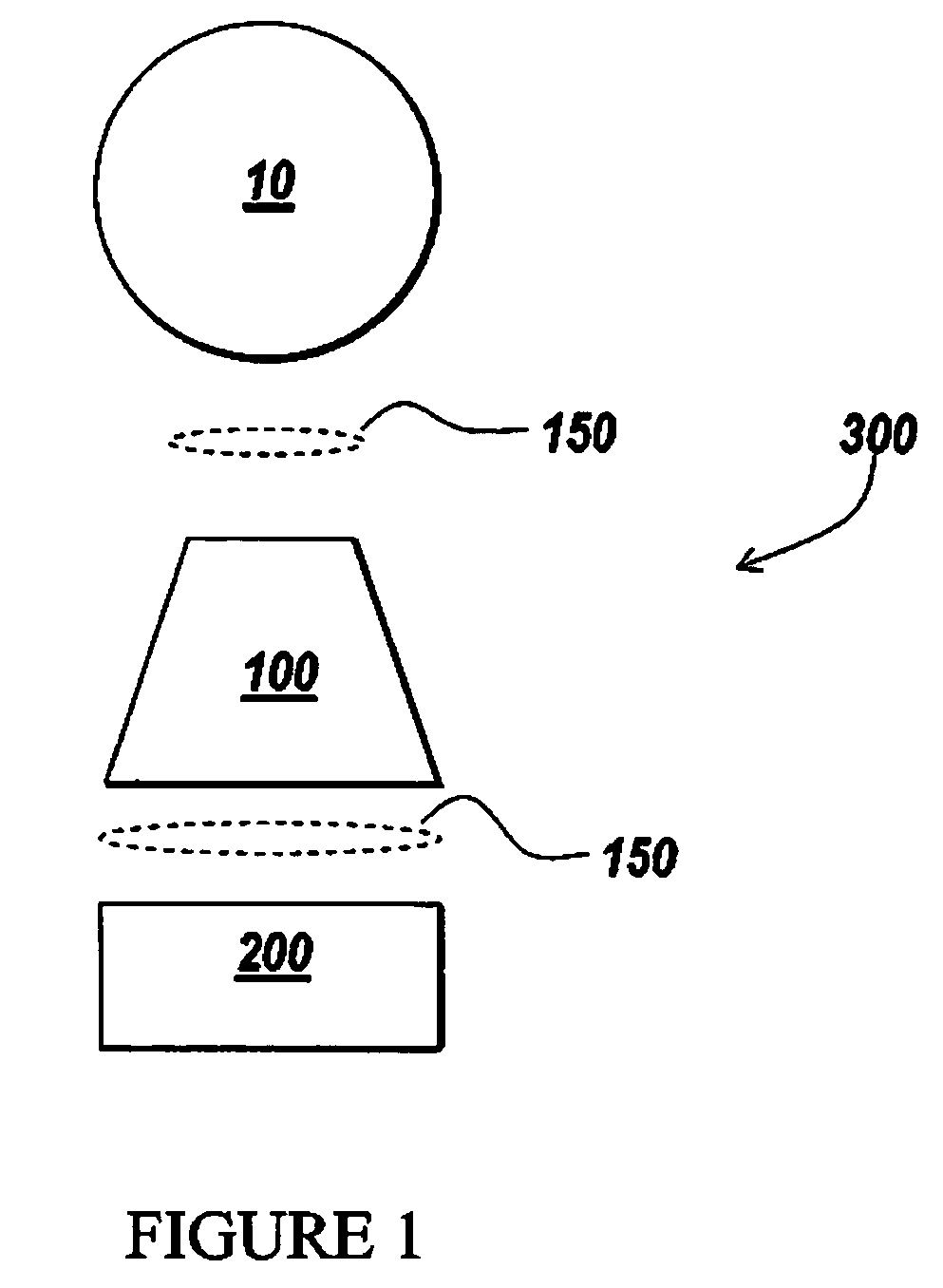Method and apparatus to effectively reduce a non-active detection gap of an optical sensor
a technology of optical sensors and non-active gaps, applied in the field of optical sensors, can solve the problems of non-active gaps between color sensors, presenting time and space differences in real terms for red, green and blue color information, dynamically active objects moving at variable rates, etc., and achieves the effect of reducing the distance between corresponding elements, enhancing the optical congruence of the first linear array, and effective reducing non-active gaps
- Summary
- Abstract
- Description
- Claims
- Application Information
AI Technical Summary
Benefits of technology
Problems solved by technology
Method used
Image
Examples
Embodiment Construction
[0024]The invention addresses the difficulties of the prior art by the use of optical fibers oriented to obtain visual images from a field of view and distribute components of the optical images to more widely-spaced sensor elements of one or more optical sensors. This can enhance the optical congruence of the image obtained through the more widely-spaced sensor elements and eliminate inaccuracies caused by non-active optical gaps in the sensors. The image fidelity of a subject can be improved at an instantaneous or “photographic” time of interest by reducing the potential image degrading effects between the sensor elements. Such image degrading effects can include a differential time delay, angular and / or positional differences between the sensor elements. Specifically, optical congruence is enhanced in that the image information received by each sensor element at any instantaneous time is a closer representation of the original subject field than it would be if the sensor elements...
PUM
 Login to View More
Login to View More Abstract
Description
Claims
Application Information
 Login to View More
Login to View More - R&D
- Intellectual Property
- Life Sciences
- Materials
- Tech Scout
- Unparalleled Data Quality
- Higher Quality Content
- 60% Fewer Hallucinations
Browse by: Latest US Patents, China's latest patents, Technical Efficacy Thesaurus, Application Domain, Technology Topic, Popular Technical Reports.
© 2025 PatSnap. All rights reserved.Legal|Privacy policy|Modern Slavery Act Transparency Statement|Sitemap|About US| Contact US: help@patsnap.com



